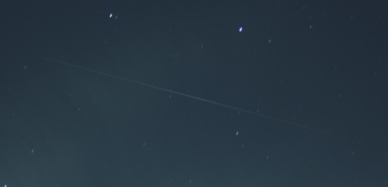Galaxy
Season
And
apparently more clouds and rain as well. After what seems like a very
long time away from the scope, I was able to get out on the night of
April 25th and 26th . The 25th was
by far the better night, and one of the few really good nights we get
in Georgia. It was just luck, I suppose, that I was out then. In any
event, I was able to get 2 images that I generally like. They are
relatively close to each other in the sky, in Coma Berenices. I'll
start with the image I took first.
 |
| M53 |
This
is the globular cluster M53. It was taken first because I knew I
would take the image using only the luminance filter and also while
the sky wasn't completely dark; just mostly so. M53 is about 58,000
light years away. According to the web site Messier-Objects.com, the
cluster contains about 500,000 stars and is moving towards us at
112Km/s (about 250,500 MPH). It has an estimated age of about 12.6
Billion years old.
A
little later, I moved over the galaxy M64.
 |
| M64 |
I
find this to be a very interesting galaxy. Notice the dark lane next
to the nucleus. I suppose it's this feature that gives this galaxy
the name of The Black Eye Galaxy, the Evil Eye Galaxy, or the
Sleeping Beauty Galaxy (where did that come from?), take your choice.
Different sources give different distances to the galaxy, but are
generally in the range of about 20 million light years. The galaxy
also has two disks of material that are rotating opposite of one
another; ie one rotating clockwise, the other counter clockwise. One
of the disks is the inner disk, the other the outer disk, with the
dark area generally being seen as the area of separation between the
two.
 |
| Galaxy showing dark lane near nucleus. |
Here's just the galaxy portion of the above image, processed a little differently to show better the "dark lane". That would be the dark area just below the bright dot that is the center of the galaxy.
Finally,
our old friend Jupiter.
Unfortunately,
this image was taken the night of the 26th and the air was
particularly unsteady. This was just before a storm front moving in
that night, so I guess I'm glad I got it as good as I did.










